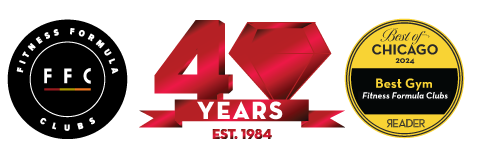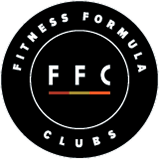How To Schedule Your Weekly Workouts According To A Personal Trainer
As a personal trainer, one of the questions I’m asked most frequently from new clients is: how should I schedule my weekly workouts? If you are wondering how many times to lift during the week or how many cardio sessions you should do to reach your goals, know that there is a lot of science and personal information that goes into this planning process, and the perfect one-size-fits-all schedule doesn’t really exist. So, how do you determine what your weekly workouts should look like for you?
Determine Your Goals
In the early days of my career as a fitness coach, I believed my number one job was to give people a killer workout and make sure they had a great time in the gym. While this isn’t inherently “wrong,” I’ve learned over the years that my priority is to safely and successfully help clients reach their goals, whatever those may be. Setting up your goals and determining your “why” is the most important variable of programing your weekly workouts. What is it that you’re looking to achieve through training? And why is that important to you? Whether your “why” is losing weight for an upcoming event like a wedding or college reunion, or getting stronger for a specific sport or hobby, the more focused you are on why you’re training, the more you will get out of it.
I highly recommend meeting with a personal trainer at your local gym or club to gather some data and talk through your goals with a professional. Trust me, most trainers (myself included) are nerds about the science of exercise and would love to answer any questions you have about training or debunk any fitness fads that might distract from or get in the way of your personal fitness journey.

Choose Your Main Exercises
Once your goals are established and you’ve determined the “why” behind your training, it’s time to plan out your program for the week. First, you need to decide how often you plan on coming to the gym/how many days you will realistically exercise each week. From there, keep in mind that it’s important to hit each muscle group during the week through all planes of motion: sagittal (forward and backward), frontal (side to side), and transverse (rotational).
Related: Breaking Up Your Daily Fitness
When it comes to my own training and that of my clients, I like to keep things as simple as possible. When planning a program for a client, I choose 3-5 main exercises that are best suited for that person to reach their goal.
For example, I personally train for athletic performance to be better at combat sports like martial arts. So, the main exercises I have chosen to focus on in my program are bench press, deadlifts, and squats for strength and olympic lifts like cleans and snatches for explosive power. Now that I’ve determined my 5 primary lifts, I schedule my workouts to include one or two of these prime movements and then add remaining lifts to that day to make me stronger and more stable when it comes to that specific movement. I also will add an exercise to work the antagonist (opposing) muscle.
Let’s say I split these five main exercises into three lifting days at the gym (day one: bench press; day two: squats and cleans; day three: deadlifts and snatches). Mondays are the days when I focus on my bench press as my primary lift. The other lifts in my workout that day might include a dumbbell press to strengthen the stability muscles that assist me in my bench press, or a single arm row, which strengthens the opposing lats while pushing.
How Does Cardio Fit In?
In the example above, we have three days at the gym for weightlifting. If you want to incorporate goal-specific cardio into your routine, make sure you choose a form of cardio that you enjoy. Your cardio doesn’t have to be running on the treadmill staring blankly at the gym TV. It’s best to find a balance between cardio and weight training. If your goal is to put on muscle mass, be careful not to overdo the cardio. Yes, you still need cardio in your routine to keep your heart healthy, but you also want to reserve your calories for your heavy lifts. If losing weight is your goal, walking on the treadmill for 10 minutes isn’t the best way to get you there. You’ll have to get your heart rate up in order to bring your body into a state of burning calories.
Don’t Forget To Schedule Recovery
Although an often overlooked aspect of programming, your recovery is one of the most important pieces to the puzzle. The recovery process can come in many different forms and is vital to building a stronger body. The most common forms of recovery are sleep, proper nutrition and stretching. Plan your lifts with movement-specific stretches pre- and post-exercise. With your new training program, your body will be under a higher physical demand due to the breaking down of muscles fibers post workout, so be sure to get enough sleep to help you recover.
Related: What Is The Best Thing To Do For A Sore Body?
Putting It All Together
When it comes to putting this all together, it’s important to take the time to commit to your plan and track your progress. Knowing you’re on the right track toward reaching your goals is the difference between having a program and just working out. If things aren’t progressing like you had planned, take the time to go through your process and see where you’re not improving. It’s your own personal journey and it’s okay to take time to re-evaluate your goals or direction.
If you feel lost, please feel free to reach out to me at mriley@ffc.com or another trainer at FFC to go over your goals and we can discuss what will work best for you. In the meantime, happy lifting.

Post written by FFC Personal Trainer Mike Riley.


